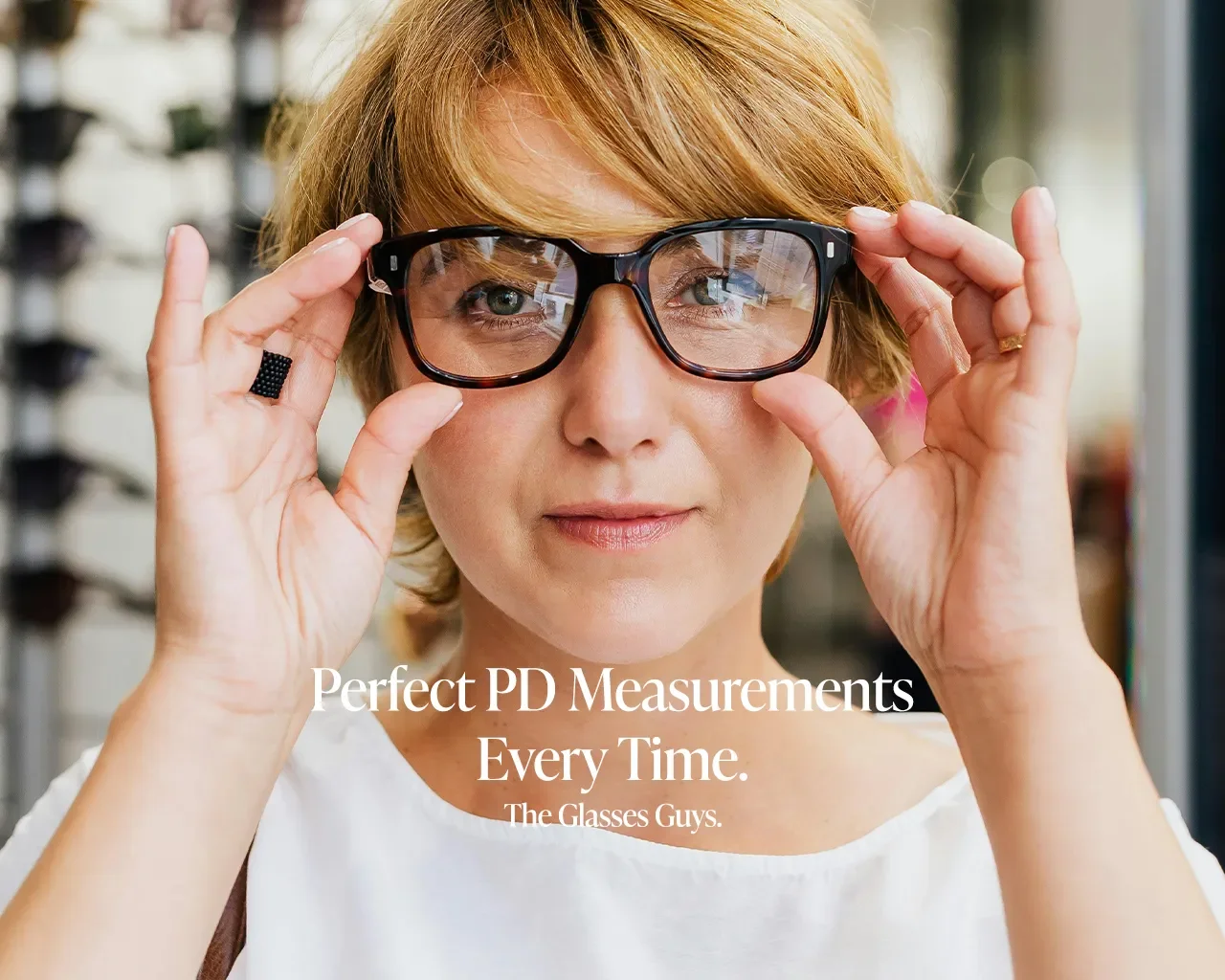How The Glasses Guys Get Your PD Measurements Perfect Every Time
When you’re ordering new lenses for your favourite frames, accuracy is everything — especially when it comes to your PD (Pupillary Distance).
At The Glasses Guys, we take extra care to ensure your lenses are perfectly centred for your eyes, giving you sharp, comfortable vision every time. Unlike big online retailers who rely on averages or automated tools, our process uses your actual face and frames to measure PD with pinpoint precision.
Here’s how we do it — and why it makes such a difference.
What Is PD (Pupillary Distance)?
Pupillary Distance (PD) is the space between the centres of your pupils, measured in millimetres.
It might sound like a tiny detail, but it’s one of the most important factors in crafting accurate lenses. Even a small PD error can lead to:
Blurry or distorted vision
Eye strain and headaches
Discomfort — especially with varifocal or bifocal lenses
That’s why we treat PD measurement as the foundation of every reglaze order we handle.
We’ve explained this in more detail in our post Understanding PD Measurements — a step-by-step look at how precision makes all the difference.
How We Measure PD at The Glasses Guys
We don’t just rely on the numbers on your prescription. Instead, we use a photo-based PD measurement system designed to be as accurate as an in-store fitting.
Here’s how our process works:
Step 1: You Send Us a Photo Wearing Your Glasses
We’ll ask you for a passport-style photo of you wearing your frames — head straight, eyes forward, natural posture.
This gives us a true-to-life image of how your glasses sit on your face.
Step 2: We Scale the Image to Actual Size
Once your frames arrive, we open your photo on our system and enlarge it to life-size. By matching your frames to your photo, we can align the exact proportions of your lenses and eyes.
This step eliminates the guesswork used by other online retailers.
Step 3: We Pinpoint Your Pupil Centres
Our technicians mark the precise centre of each pupil on your image, then measure your PD to the millimetre.
This ensures your lenses are cut and fitted exactly where your eyes naturally focus — giving you comfortable, distortion-free vision.
Whether you order single vision, reading, or varifocal lenses, this level of precision means your optical centres match your true line of sight.
Why Our Method Works
Our process combines years of optical experience with modern digital accuracy. While some companies use automated apps or estimated PDs, we take a more personal approach.
By working from a real photo of you wearing your frames, we can see exactly how your glasses sit day-to-day — not just how they should sit in theory.
That’s why our customers consistently experience:
Better visual clarity
Natural focus without strain
More comfort, even during long wear
Small Business, Big on Precision
We might be independent, but we’re obsessive about accuracy. Every pair of glasses is:
Checked and measured by a real optical technician
Custom-fitted using your own photo
Crafted with care — not rushed through a machine
So, if you’re searching for:
accurate PD measurement for new lenses
how to replace lenses in my own glasses
independent reglazing service UK
custom fitted lenses for my glasses
… you’ve found the right team.
Get Perfectly Measured Lenses with The Glasses Guys
If you love your frames but need new lenses, we’ll handle the technical details.
Just send us your glasses and a quick photo, and we’ll take care of the rest — measuring your PD accurately for clear, natural, and comfortable vision.
